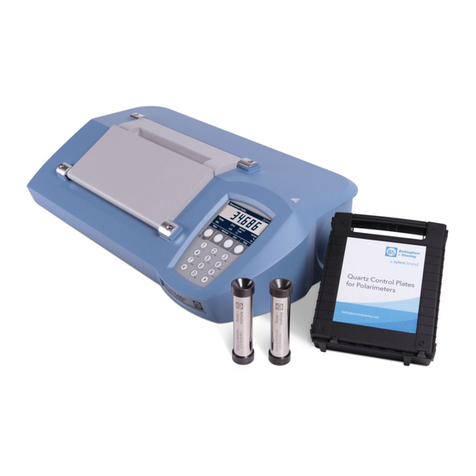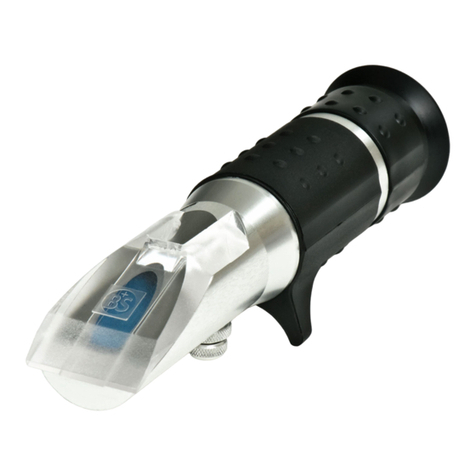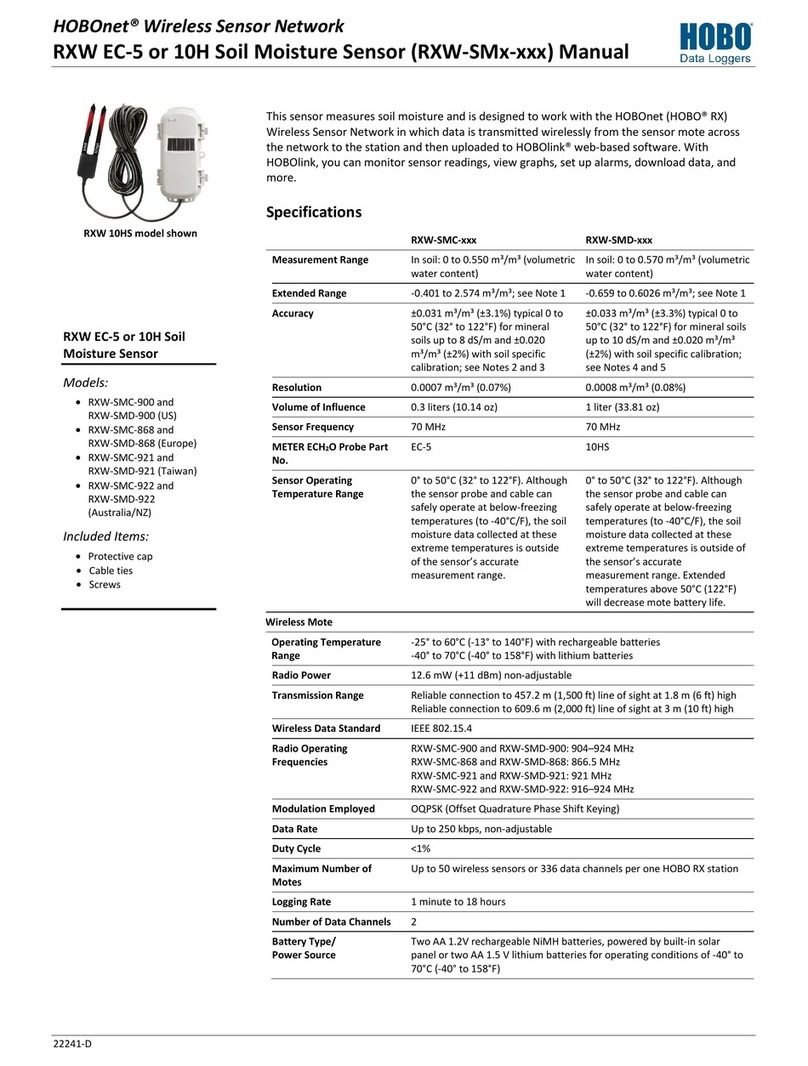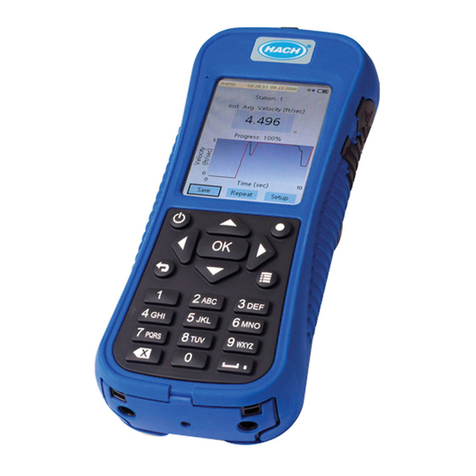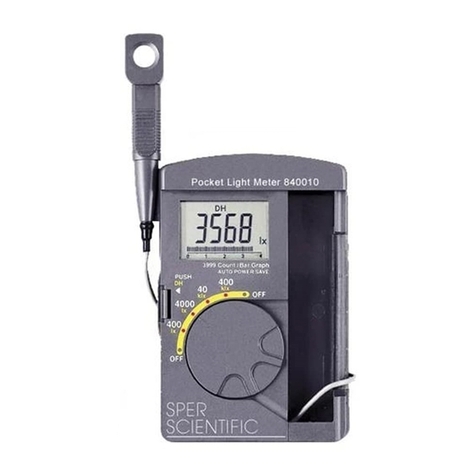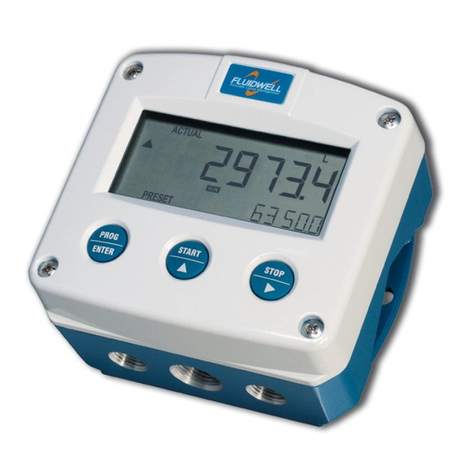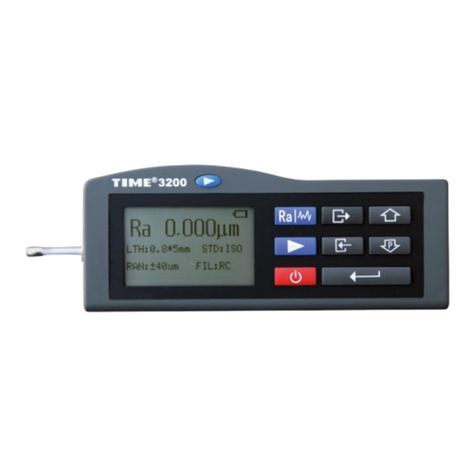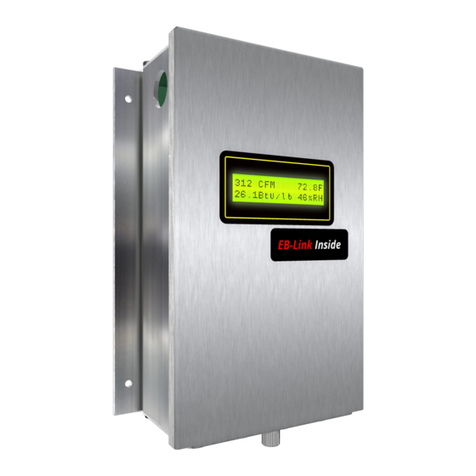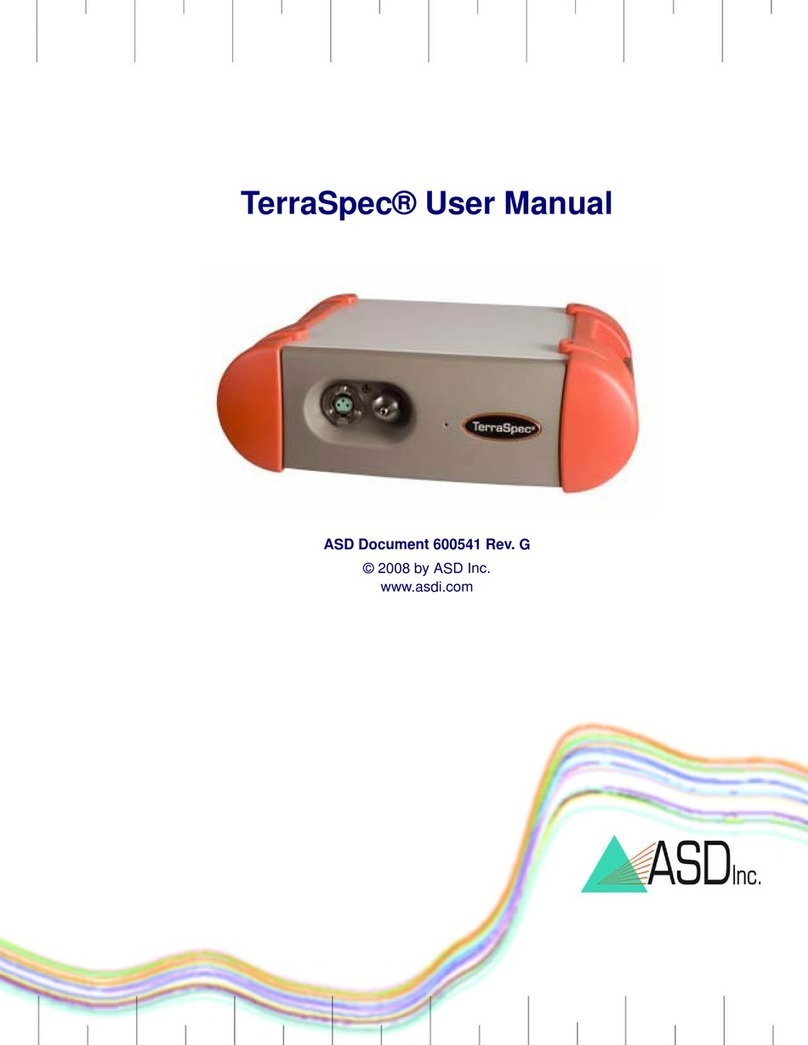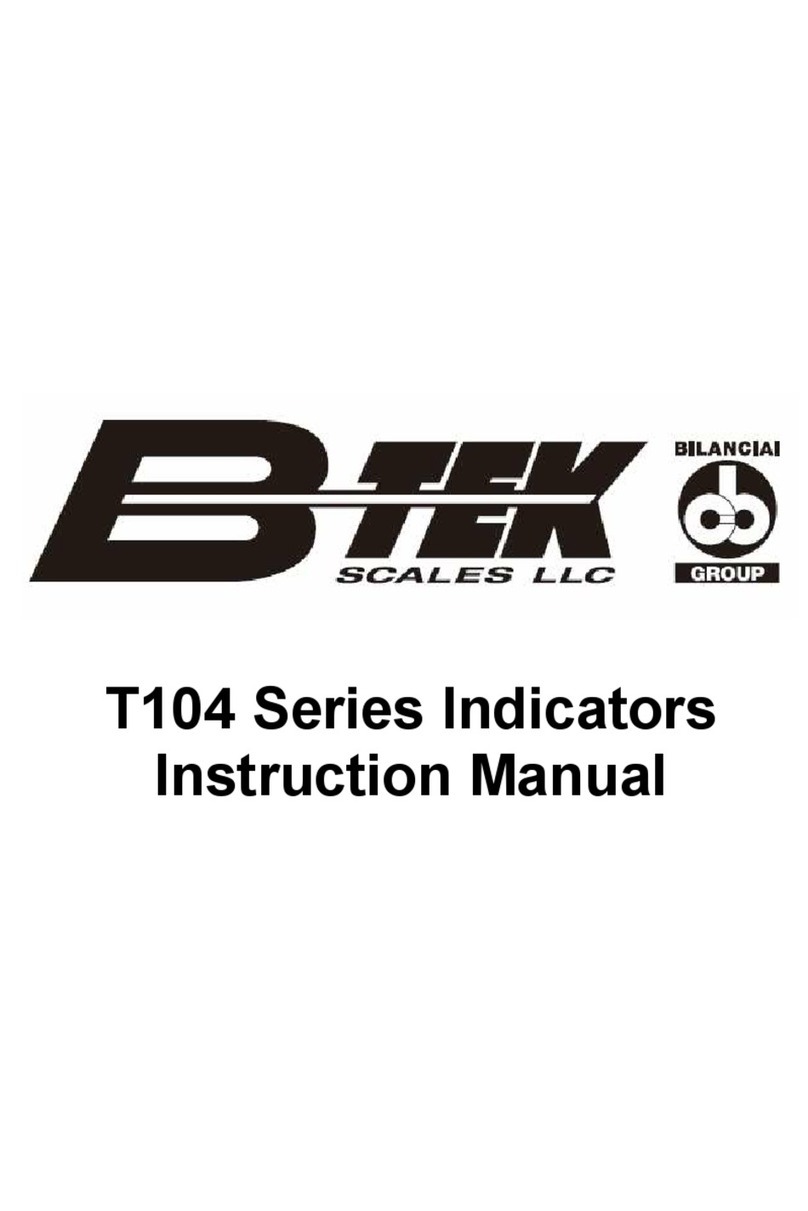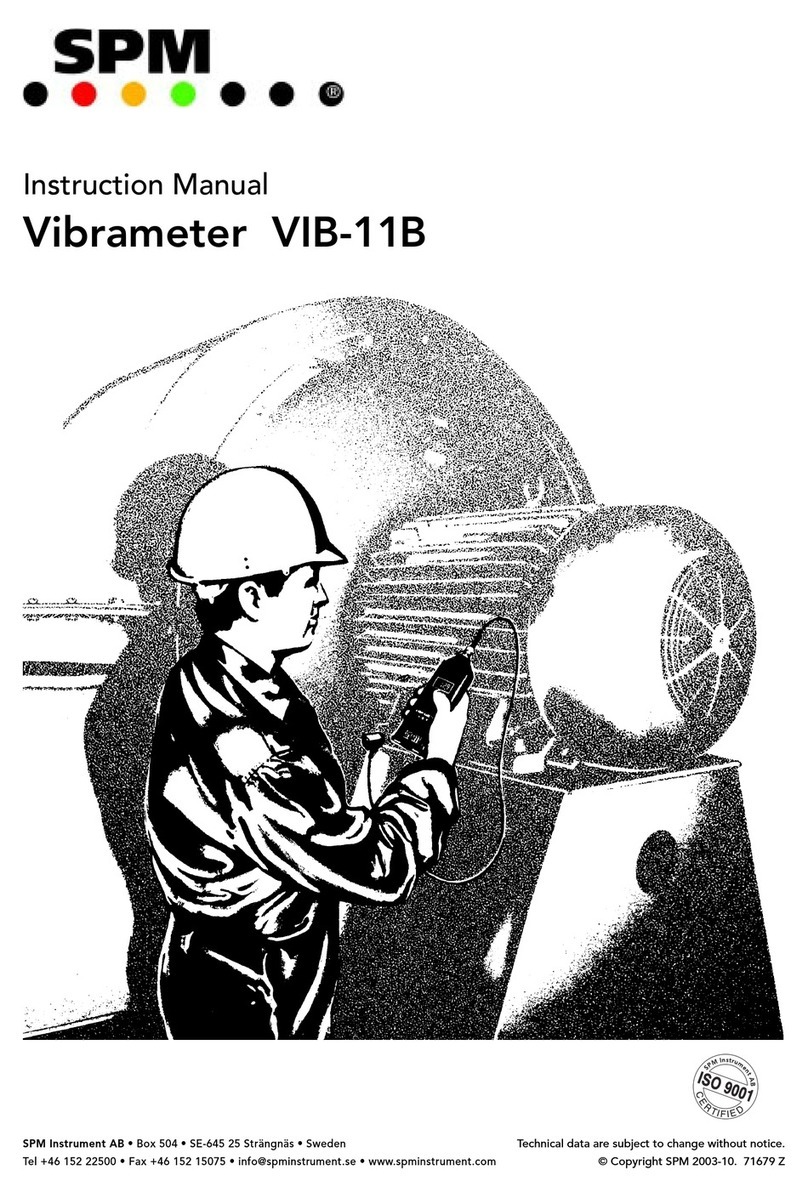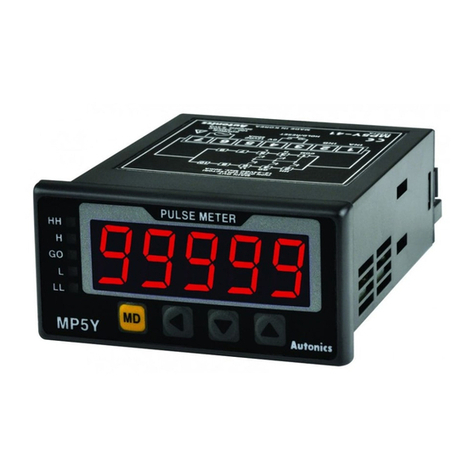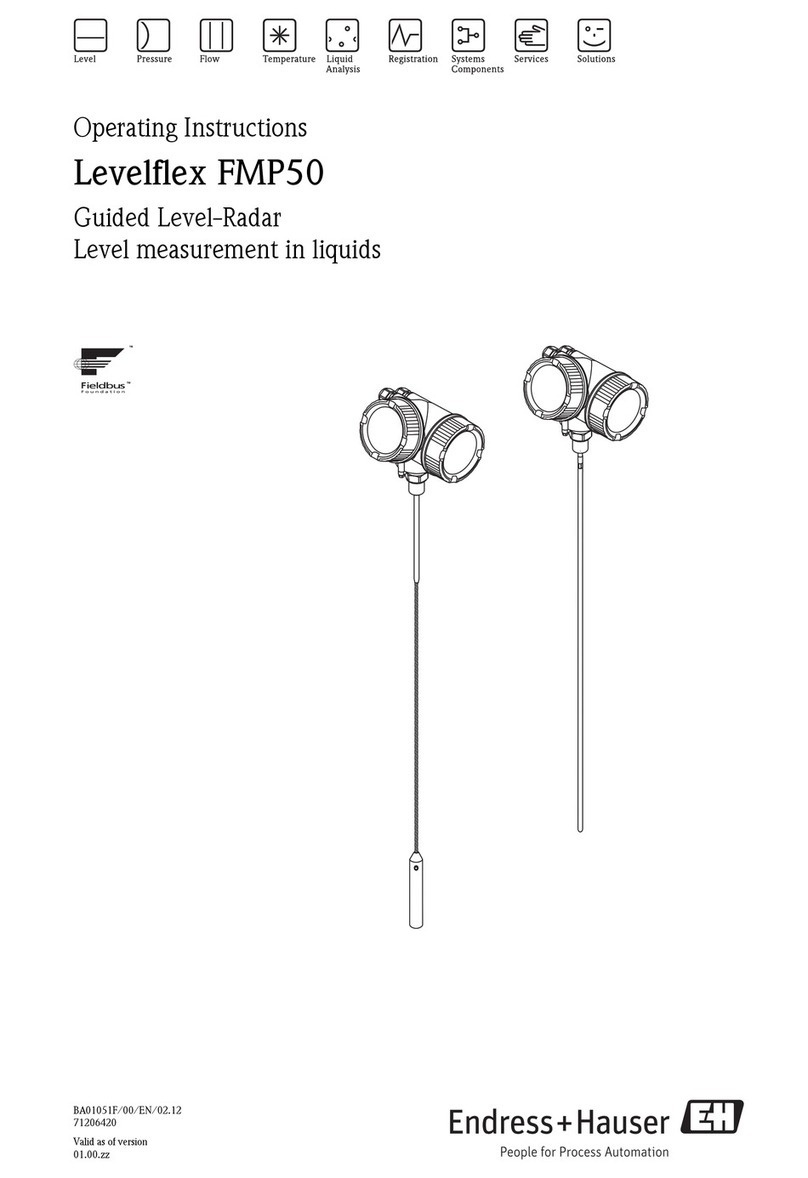Bellingham and Stanley Abbe 60 User manual

Abbe 60 Refractometer
User Guide

DECLARATION OF CONFORMITY
According to ISO/IEC Guide 22 and EN 45014
Manufacturer's Name Bellingham & Stanley Ltd.
Manufacturer's Address Longfield Road,
Tunbridge Wells,
Kent TN2 3EY
United Kingdom
declares that the product
Product Name Abbe 60 Refractometer
Model Number All
is designed to conform to the following Product Specifications:
Safety BS EN 60950-1:2002
EMC Emissions
BS EN 61000-6-3:2007 Emission for residential,
commercial and light-
industrial environments
Immunity
BS EN 61000-6-2:2007 Immunity for industrial
environments
Supplementary The product herewith is designed to comply with the
requirements of the EMC Directive 89/336/EEC.
This symbol is an internationally agreed indicator that the product
bearing it should not be disposed of as general waste or garbage which
might end up in landfill sites, but should instead be sent for special
processing and/or recycling in those countries where appropriate
legislation and facilities are in place.
This symbol indicates a caution or warning, please refer to the manual.

Abbe 60 User Guide (Eng)
B+S Code : 10-292
Issue 4B
January 2008
©Copyright Bellingham + Stanley Ltd. 2008
Every effort has been made to ensure the accuracy of the contents of this manual. However, Bellingham +
Stanley Ltd. can assume no responsibility for errors contained in the manual or their consequences.
Printed in United Kingdom.
Bellingham+Stanley Ltd. Bellingham+Stanley Inc.
Longfield Road, Tunbridge Wells, 1000 Hurricane Shoals Road, Building D,
Kent, TN2 3EY, United Kingdom Suite 300, Lawrenceville, GA 30043, USA
Phone: +44 (0) 1892 500400 Phone: 770 822 6898
Fax: +44 (0) 1892 543115 Fax: 770 822 9165
Page 1

Installing the instrument
Carefully remove all of the packing material. It is recommended that the box and other packing
materials are retained so that, should the need arise, the refractometer can be safely returned to
the manufacturer. Remove the cable tie that secures the upper prism box during transit. Open the
upper prism box and remove packing material from between the two prisms.
Contents list B+S code
Abbe Refractometer see below for part number
comprising:
1 Operating Instructions 10-292
1 Instruction manual CD-ROM 55-300
1 Power supply 55-104
1 Bottle of monobromonaphthalene 10-43
1 Calibration test piece see below for part number
1 Mains lead see below for part number
- Calibration Tables see below for part number
Part numbers
Abbe refractometer part numbers
Model Part number Calibration test piece Calibration Tables
60 / 95 10-03 Glass, 10-44
60 / DR 10-99 Glass, 10-44
Not supplied
60 / ED 10-04 Silica, 10-46 10-295
60 / LR 10-06 Silica, 10-46 10-297
Power lead part numbers
Description UK Version 230V Euro Version 230V US Version 110V
Mains leads (for use with 55-104) 61-191 61-193 61-192
Page 2

Positioning the system
Place the instrument, and separate light source if used, on a flat and stable bench which is:
•dry and indoors
•away from draughty or hot equipment like fans or heaters
•out of direct sunlight or strong ambient light
•away from potential sources of interference, such as RFI generating equipment
•within reach of a power point
•not using a power circuit that also has large motors or noise generating equipment
connected to it
Mains connection
The power supply adapter is supplied with a moulded mains cord and plug, to suit one of several
socket types. For UK lead, replace fuse only with the type indicated on plug.
Mains cord wire colours
Type Plug Style
Line
(Phase)
Neutral
(Return)
Earth
(Ground)
UK (230V) 13 Amp square pin to BS363/A Brown Blue Green / Yellow
EU (230V) European Schuko plug25 Brown Blue Green / Yellow
US (110V) 3 pin American plug Black White Green
Power requirements
Voltage 110 to 230V ~ ± 10%, 50 to 60 Hz
Maximum load less than 50 mA
Power supply adapter
RISK OF ELECTRIC SHOCK:
•For electrical safety information, read the leaflet enclosed with the power supply.
•For indoor use only.
•Must be kept dry.
•Disconnect the equipment from the mains supply before unplugging the mains lead
from the power supply unit.
•Do not open the power supply adapter. No user serviceable parts inside.
WARNING:
•For indoor use only.
•Must be kept dry.
•No user serviceable parts inside.
•Do not open.
•Do not cover, designed to operate with free air convection.
•No cleaning required.
Page 3

Instrument overview
Abbe 60 refractometers can be used to measure the refractive index of liquid or solid samples for a
wide range of applications.
There are 2 versions of the instrument:
Direct Reading models
60/95 Range 1.300 to 1.535
60/DR Range 1.300 to 1.740
Sample values can be read directly from the scale graticule in either refractive index or %sucrose
(°Brix).
These models have a built-in adjustable L.E.D. light source at approximately 589nm wavelength.
High Accuracy models
60/ED Range 1.30 to 1.74
60/LR Range 1.20 to 1.70
The High Accuracy models have a scale graticule graduated in linear divisions. The sample readings
must be converted to refractive index (or other scales such as Brix) using either a software program
or conversion tables.
A separate monochromatic light source is required; e.g. a Spectral Lamp Unit with a cadmium,
mercury or sodium bulb.
Page 4

Main parts & controls
Desiccator
Control knob
Calibration
Adjustment
cover
Water nozzle
Upper prism shutter
Upper prism bo
x
Integral L.E.D. light source
(Direct Reading models only)
Lower prism bo
x
Water nozzle
Toggle clamp
Power switch
(Fitted to early
models only)
Power
connector
Scale telesco
p
e
Temperature display
Dispersion drum
(Direct Reading models)
Micrometer drum
Page 5

The upper & lower prism boxes
A liquid sample to be tested is placed on the measurement prism and the upper prism is clamped
down onto it forming a thin layer of the sample. Light from the light source passes through upper
prism, then is refracted through the sample layer and into the measurement prism.
The upper prism box is held in place by a toggle clamp, which also forces the box up by a few
millimetres when opening. The toggle clamp also prevents the upper prism box dropping directly
onto the measurement prism and causing damage to the surface.
The upper & lower prism boxes both incorporate water jackets, each with two hose connection
nozzles. This enables the sample to be temperature controlled from a water circulator.
Measurement prism
Lower prism bo
x
Prism box toggle clamp
Water nozzles
Any deterioration of the surface condition of the measurement prism will limit the performance of
the instrument and make accurate measurements difficult.
It is important to keep the measurement prism in good condition.
The temperature display module
The current temperature of the measurement prism is continually monitored and shown on the
display on the rear face of the instrument in degrees Celsius.
Page 6

Direct Reading instruments only
The Direct Reading instruments have an integral L.E.D. (light emitting diode) light source for sample
illumination.
L.E.D. light source
L.E.D. arm adjustments
A dispersion drum is fitted to Direct Reading instruments to enable colours other than yellow
originating from the L.E.D (or more significantly, an alternative white light source) to be removed
from the field view. This will sharpen the borderline and allow accurate setting against the
crosswires.
High Accuracy instruments only
High Accuracy models are not fitted with an integral L.E.D. light source because a monochromatic
light source, such as a sodium lamp, is required to achieve the measurement precision.
A window and shutter are fitted in the lower prism box, which allows the instrument to be
alternatively used in reflection, rather than transmission, mode. This is useful when reading dark
samples. (See page 3-4 for more details)
Lower prism box window
Lower prism box window shutter
•Turn the knob anticlockwise to close the shutter for transmission measurements
•Turn the knob clockwise to open the shutter for reflection measurements
Page 7

Initial setting up
Power supply
All Abbe 60 refractometers are supplied with an external power supply, which should be plugged
into the sealed power connector on the side of the instrument.
The power supply itself is connected to the mains supply by a moulded mains lead, which is also
supplied with the instrument.
Connect the mains lead to the mains supply and switch on the supply.
Early models only, with serial numbers prior to A01051
Switch the instrument on by pressing down the power switch, located next to the instrument
power connector.
Altering the focus of the telescopes
To alter the focus of either of the telescopes, move the lens cap away and towards the main body
of the instrument until the scale and the crosswires are well defined. To help the lens cap move,
twist it whilst adjusting the focus.
Below are examples of the views that you will get when looking down each of the telescopes (the
scale view is that of a Direct Reading instrument).
Scale view Field view
Adjusting the upper prism box shutter
The upper prism box shutter has two separate functions.
The first is to control the amount of light from the light source that is passed through the sample;
this is necessary to adjust the contrast between the light and dark parts of the borderline.
The other use is to limit unwanted, ambient light entering the prism. If you are using the integral
L.E.D. light source on a Direct Reading instrument, it is recommended that the shutter should
initially be open about 2mm. This will restrict the amount of white light entering the sample. When
using a spectral light source the shutter has a lesser effect, as the light source will be able to flood
the sample with light.
Page 8

Measuring a sample
Setting the borderline
Push the toggle down and raise the upper prism box. Clean the polished surfaces of the upper and
measurement prisms using distilled water with a soft tissue. Finish off by drying the prisms with soft
tissues.
Apply a few drops of sample to the centre of the measurement prism with a pipette. Lower the
upper prism box and lift the toggle clamp to lock it onto the measurement prism. Any excess
sample should be wiped away using soft tissues; this will improve the definition of the borderline.
Look into the field telescope and rotate the control knob until the borderline (the
point where the light and dark areas meet) comes into view.
It should then be aligned with the centre of the cross hairs in
the field telescope.
To obtain the optimal borderline quality, both the light source position and the
prism box shutter should be adjusted.
Direct Reading models (Abbe 60/95, 60/DR)
The L.E.D. light source has two adjustable joints, allowing the light to be easily positioned to
provide the best borderline. To adjust a joint, turn the associated clamping knob anti-clockwise
until it is loose enough to allow the joint to move. Make the adjustment and tighten the knob by
turning it clockwise, whilst holding any adjustments in place.
The L.E.D. should be positioned so that it illuminates just the bottom of the upper prism.
The dispersion drum control knob should be adjusted to remove as much colour as possible from
entering the field view. This will improve the borderline quality. The borderline might need to be
re-aligned with the crosshairs after setting the dispersion drum.
High Accuracy models (Abbe 60/ED, 60/LR)
Close the lower prism box window shutter by turning the knob anticlockwise.
Position the external light source directly in front of the Abbe and align the opening in the light
source with the upper prism box. Next, adjust the height of the light source, so that all the upper
prism box is well illuminated with the light.
If the light source being used requires a filter, this should be slipped over the field telescope lens
cap.
Page 9

Determining the reading value
Direct Reading models (60/95, 60/DR)
Look through the scale telescope and read the measurement value directly from the scale in either
refractive index or %sucrose (°Brix).
High Accuracy models (60/ED, 60/LR)
Turn the micrometer drum to the 0 position. Then whilst looking at the scale through the scale
telescope, turn the micrometer drum until the previous scale division is straddled centrally by the
two fiducial lines.
The example shown would give a value through the scale telescope
of 33.3.
Next, read the value on the micrometer drum, this example being 4.3.
The total scale reading will then be:
The value through the scale telescope + the micrometer value divided by 100
Example: 33.3 + 4.3 / 100 = 33.3 + 0.043 = 33.343
Scale reading = 33.343
The operator can then determine the refractive index from the scale reading by one of two
methods:
•The Abbe Utilities software
•Calibration table
Page 10

Using the Abbe Utilities software
Every Abbe refractometer is supplied with an Instruction Manual CD (55-300), contained within this
CD is a copy of the Abbe Utilities program, which runs on Microsoft Windows. It provides the
ability to convert from Abbe scale reading to refractive index and other scales.
Abbe scale reading
R.I. reading
Firstly, check that the Abbe Setup data
matches that of your instrument and light
source. If the settings are not correct, press
and edit the values.
To convert an Abbe scale reading into
refractive index, place the cursor in the data
entry box below ‘Abbe’, type the Abbe
scale value ‘17.243’ and press enter. The
equivalent RI, Brix and selected UDS scale
values will be shown in the relevant boxes.
Using a Calibration Table
Every High Accuracy instrument is supplied with a calibration table booklet for sodium D line,
which will convert Abbe scale readings into refractive index. Below is an example for how the
refractive index value for an Abbe scale reading of 17.243 is calculated, using calibration tables.
First find the correct row in the table,
which for the example would be 17.2.
Scale
.00
... .03 .04 .05
17.1
1.46604
...
632
641
650
17.2
1.46696
...
724
733
743
17.3
1.46789
...
816
826
835
Now find the correct column in that
row, e.g. 0.04. The column and row
position would give the correct Abbe
scale reading for 17.24.
To calculate the refractive index reading, take the RI value for 17.20, which is 1.46696 and
substitute the last 3 numbers for the 3 numbers found at 17.24 in the table, 733. This would make
the reading 1.46733.
Finally, use the third decimal place of the Abbe scale reading.
Find the refractive index reading for the next column, in this case, 17.25, which would be 1.46743.
Then calculate the RI from:
Where:
H=Next columns RI value=1.46743
46736.1
46733.13*
10
46733.146743.1
*
10
=
+
⎟
⎠
⎞
⎜
⎝
⎛−
=
+
⎟
⎠
⎞
⎜
⎝
⎛−
=
A
A
CD
CH
AC=First columns RI value=1.46733
D=Scale reading 3rd DP=3
A=Actual RI
Cleaning the prisms
Page 11

With the measurement taken, the prism can now be cleaned. Samples should be removed from the
prism surfaces as soon as practical after measurement. Leaving sample between the prisms for long
periods, and allowing it to dry, can cause the two prisms to stick together.
The sample should be removed from both prisms using a suitable solvent; distilled water or alcohol,
depending upon whether the sample is water or oil based, and cleaning with tissue. The prisms
should then be finally washed with distilled water or alcohol and dried with clean tissue.
Note:
When cleaning the prisms, please remember that excessive rubbing with abrasive tissues could
scratch the prism surfaces. This would reduce the quality of the borderline and also cause sample
contamination. B&S do not recommend the use of aggressive solvents such as acetone – always use
alcohols or other non-aggressive solvents.
Reflection mode (High Accuracy models only)
If the sample layer is optically dense at the wavelength used, then insufficient light may not pass
through it to provide a visible borderline. This problem can generally be overcome by using internal
reflection of the light at the interface of the prism and sample.
To use internal reflection
•Slide down the “Upper prism shutter” to prevent light entering into the upper prism.
•Open the “Lower prism box window shutter” by turning the knob clockwise as seen from
the front of the instrument.
•Adjust the light source to enter the “Lower prism box window.
The borderline as seen in the field telescope will however be inverted, the darker part of the field
being at the top. Usually the contrast is not so good as with transmission mode but in general a
sharp line can be obtained.
Page 12

Calibrating the instrument
The calibration of all Abbe 60 refractometers can be adjusted to accurately set the scale relative to
a test piece with known refractive index. This adjustment should only need to be made at
infrequent intervals, but it is recommended that the test piece be applied as a daily routine to check
that all is in order and the instrument is reading correctly. Certainly check at each change of user
since the setting position varies from one person to another.
Checking the instrument with the test piece
Apply two small drops of monobromonaphthalene contact liquid (supplied
with the instrument, code no. 10-43) to the centre of the measurement
prism, using a small wooden or plastic stick. The test piece should be
placed polished side down onto the prism on top of the contact liquid.
Take care when applying the test piece not to scratch the prism. The
contact liquid should spread out under the test piece and cover the whole
of the interface between the test piece and the prism.
It is important to use the correct amount of contact liquid; there should be just sufficient to cover
the interface but should not spread beyond the test pieces edges. The correct amount can only be
found with experience.
To check the test piece is applied correctly, see that it does not rock. If it does, remove the test
piece and clean off the contact liquid; then re-apply as above.
To remove a test piece from the prism, apply an alcohol-based solvent liberally around the test
piece and allow it to “float” off of the prism surface with the minimum of sliding.
Each test piece is identified by a serial number and is supplied with a Certificate of Precision
specifying its actual refractive index.
For Direct Reading models, the refractive index can be read from the scale and compared with the
test piece value.
For High Accuracy instruments, the correct Abbe scale reading for the silica test piece can be found
on the front page of the Calibration Table supplied with the instrument. If the Abbe Utility
software is used, press and the correct Abbe scale reading will be displayed.
Page 13

Adjusting the instrument calibration
Ensure that the borderline is accurately aligned with the cross wires in the field telescope. Unscrew
and remove the Calibration Adjustment Cover.
Direct Reading models (Abbe 60/95, 60/DR)
Gently adjust the calibration screw using a large flat screw driver so that the correct reading is
shown in the scale telescope.
High Accuracy models (Abbe 60/ED, 60/LR)
Set the micrometer drum to the last 2 decimal places of the scale reading for the test piece, when
displayed to 3 decimal places. For example, if the scale reading should read 16.275 then the
micrometer drum should be set to 7.5. If the scale reading should be 16.002 then the micrometer
drum should be set to 0.2.
Gently adjust the calibration screw using a large flat screw driver so that the correct value is in the
middle of the two fiducial lines. If the scale reading should be 16.275, then the scale should read
16.2, e.g. the scale marker for 16.2 should be straddled by the fiducial lines.
All models
Finally, always replace the Calibration Adjustment Cover
Page 14

Temperature effects on the measurement
Temperature correction of the refractometer
If the instrument is used to take measurements at any temperature other than 20°C, then it will be
necessary to apply a temperature correction to the scale reading. This is to compensate for the
change of refractive index of the prism at the working temperature; the instrument being initially
calibrated at 20°C.
Direct Reading models
Abbe 60/95
Measured Brix value 0 10 20 30 40 50 60 70 80 90
Correction: °Brix/°C 0.005
0.005
0.005
0.004
0.004 0.004
0.003
0.003
0.003
0.003
Measured Refractive index 1.30 to 1.535
Correction: Refractive Index/°C 0.0000076
Abbe 60/DR
Measured Brix value 0 10 20 30 40 50 60 70 80 90
Correction: °Brix/°C 0.005
0.005
0.005
0.004
0.004 0.004
0.003
0.003
0.003
0.003
Measured Refractive index 1.30 to 1.74
Correction: Refractive Index/°C 0.0000078
Examples: A 60/95 gives a reading of 35.4
°
Brix at a temperature of 75
°
C
(T – 20) x 0.004 = 55 x 0.004 = 0.22
Scale reading of instrument = 35.4
Corrected reading = 35.62
A 60/DR gives a reading of 1.4864 at a temperature of 70
°
C
(T – 20) x 0.0000078 = 50 x 0.0000078 = 0.00039
Scale reading of instrument = 1.4864
Corrected reading = 1.48679
High Accuracy models (Abbe 60/ED, 60/LR)
Using the Abbe Utilities software
Enter the measurement temperature in Abbe Setup and the correction will be carried out
automatically.
Using a Calibration Table
Details for correction with temperature are shown at the end of the tables.
Page 15

Temperature correction of the sample
The refractive index of all samples will vary with temperature. If it is required to know the
refractive index of the sample at 20°C, then either the instrument must be controlled at 20°C, as
described below, or a correction value for the sample must be added to the scale reading.
The correction value will vary considerably with the type of sample. Glass samples have a low
temperature coefficient, water based products are higher and oils and chemicals generally greatest.
Typical (and very approximate) values are:
Sample Temperature coefficient: Change in index / °Celsius
Glass +0.00001
Water -0.00010 (-0.07°Brix)
50% sucrose sample (50°Brix) -0.00017 (-0.08°Brix)
Edible oil -0.00040
Correction values for sucrose solutions measured on the Brix (% Sucrose) scale are shown in the
table below. The correction values should be added to the scale reading.
Page 16

Scale reading °Brix
0 5 10 15 20 25 30 35 40 45 50 55 60 65 70 75 80 85
15 -0.29 -0.30 -0.32 -0.33 -0.34 -0.35 -0.36 -0.37 -0.37 -0.38 -0.38 -0.38 -0.38 -0.38 -0.38 -0.38 -0.37 -0.37
16 -0.24 -0.25 -0.26 -0.27 -0.28 -0.28 -0.29 -0.30 -0.30 -0.30 -0.31 -0.31 -0.31 -0.31 -0.31 -0.30 -0.30 -0.30
17 -0.18 -0.19 -0.20 -0.20 -0.21 -0.21 -0.22 -0.22 -0.23 -0.23 -0.23 -0.23 -0.23 -0.23 -0.23 -0.23 -0.23 -0.22
18 -0.12 -0.13 -0.13 -0.14 -0.14 -0.14 -0.15 -0.15 -0.15 -0.15 -0.15 -0.15 -0.15 -0.15 -0.15 -0.15 -0.15 -0.15
19 -0.06 -0.06 -0.07 -0.07 -0.07 -0.07 -0.07 -0.08 -0.08 -0.08 -0.08 -0.08 -0.08 -0.08 -0.08 -0.08 -0.08 -0.07
20 0.00 0.00 0.00 0.00 0.00 0.00 0.00 0.00 0.00 0.00 0.00 0.00 0.00 0.00 0.00 0.00 0.00 0.00
21 0.06 0.07 0.07 0.07 0.07 0.07 0.08 0.08 0.08 0.08 0.08 0.08 0.08 0.08 0.08 0.08 0.08 0.07
22 0.13 0.14 0.14 0.14 0.15 0.15 0.15 0.15 0.16 0.16 0.16 0.16 0.16 0.16 0.15 0.15 0.15 0.15
23 0.20 0.21 0.21 0.22 0.22 0.23 0.23 0.23 0.23 0.24 0.24 0.24 0.24 0.23 0.23 0.23 0.23 0.22
24 0.27 0.28 0.29 0.29 0.30 0.30 0.31 0.31 0.31 0.32 0.32 0.32 0.32 0.31 0.31 0.31 0.30 0.30
25 0.34 0.35 0.36 0.37 0.38 0.38 0.39 0.39 0.40 0.40 0.40 0.40 0.40 0.39 0.39 0.38 0.38 0.37
26 0.42 0.43 0.44 0.45 0.46 0.46 0.47 0.47 0.48 0.48 0.48 0.48 0.48 0.47 0.47 0.46 0.46 0.45
27 0.50 0.51 0.52 0.53 0.54 0.55 0.55 0.56 0.56 0.56 0.56 0.56 0.56 0.55 0.55 0.54 0.53 0.52
28 0.58 0.59 0.60 0.61 0.62 0.63 0.64 0.64 0.64 0.65 0.65 0.64 0.64 0.63 0.63 0.62 0.61 0.60
29 0.66 0.67 0.68 0.70 0.71 0.71 0.72 0.73 0.73 0.73 0.73 0.73 0.72 0.72 0.71 0.70 0.69 0.67
30 0.74 0.76 0.77 0.78 0.79 0.80 0.81 0.81 0.82 0.82 0.81 0.81 0.80 0.80 0.79 0.78 0.76 0.75
31 0.83 0.84 0.85 0.87 0.88 0.89 0.89 0.90 0.90 0.90 0.90 0.89 0.89 0.88 0.87 0.86 0.84 0.82
32 0.92 0.93 0.94 0.96 0.97 0.98 0.98 0.99 0.99 0.99 0.99 0.98 0.97 0.96 0.95 0.93 0.92 0.90
33 1.01 1.02 1.03 1.05 1.06 1.07 1.07 1.08 1.08 1.08 1.07 1.07 1.06 1.04 1.03 1.01 1.00 0.98
34 1.10 1.11 1.13 1.14 1.15 1.16 1.16 1.17 1.17 1.16 1.16 1.15 1.14 1.13 1.11 1.09 1.07 1.05
35 1.19 1.21 1.22 1.23 1.24 1.25 1.25 1.26 1.26 1.25 1.25 1.24 1.23 1.21 1.19 1.17 1.15 1.13
36 1.29 1.30 1.31 1.33 1.34 1.34 1.35 1.35 1.35 1.34 1.34 1.33 1.31 1.29 1.28 1.25 1.23 1.20
37 1.39 1.40 1.41 1.42 1.43 1.44 1.44 1.44 1.44 1.43 1.43 1.41 1.40 1.38 1.36 1.33 1.31 1.28
38 1.49 1.50 1.51 1.52 1.53 1.53 1.54 1.54 1.53 1.53 1.52 1.50 1.48 1.46 1.44 1.42 1.39 1.36
39 1.59 1.60 1.61 1.62 1.63 1.63 1.63 1.63 1.63 1.62 1.61 1.59 1.57 1.55 1.52 1.50 1.47 1.43
Temperature °Celsius
40 1.69 1.70 1.71 1.72 1.73 1.73 1.73 1.73 1.72 1.71 1.70 1.68 1.66 1.63 1.61 1.58 1.54 1.51
Example: A 60/95 gives a reading of 35.4
°
Brix at a temperature of 32
°
C
Scale reading of instrument = 35.4
Correction = 0.99
Equivalent value at 20°C = 36.39
Page 17

Temperature control from a circulator
Both the fixed and hinged prism boxes are fitted with nozzles for water circulation in order to
maintain the prisms and sample at known temperatures.
By controlling the instrument to a constant temperature, the time necessary for the instrument to
stabilise after applying a sample to the prism will be minimised and measurement conditions will be
optimised for high accuracy work.
If it is practical to control the instrument temperature to 20ºC, the corrections for the instrument
and the sample detailed above will not be required.
It is recommended that the two boxes are connected in series as follows.
Incoming water should be fed into the left
hand side of the main body, when viewed
from behind. The water will exit through
the right side of the main body. A 45cm
long pipe should be connected to this
nozzle and connected to the right hand
nozzle of the upper prism box. A pipe on
the left nozzle on the upper prism box will
return the water back to the circulator.
With the instrument set-up as above, the
Abbe will have both the water connections
to the water bath on the left hand side,
when viewed from behind. It is advisable
to secure the pipes to the nozzles with
hose clips. (The photograph shows the pipes without clips for clarity).
Page 18
Table of contents
Other Bellingham and Stanley Measuring Instrument manuals
Popular Measuring Instrument manuals by other brands

Parkwood
Parkwood KXer-Single manual

Leica
Leica RANGEMASTER CRF 1000-R instructions
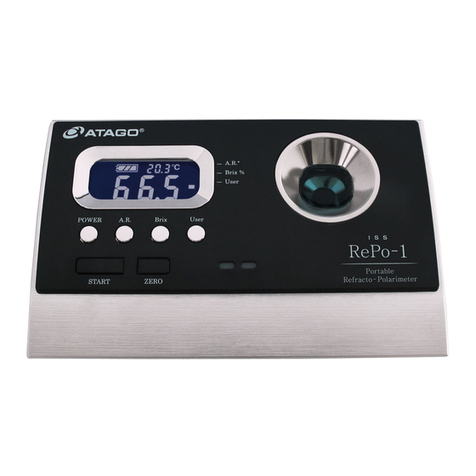
ATAGO
ATAGO RePo-1 instruction manual
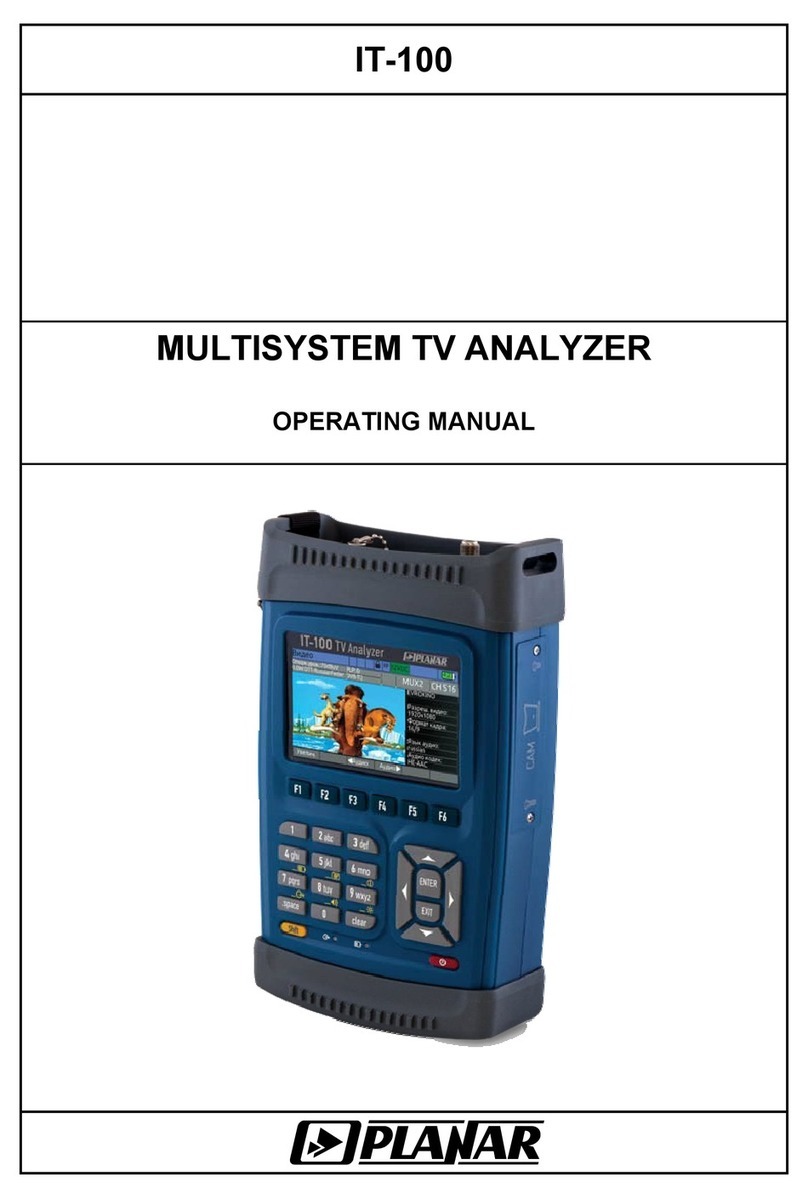
Planar
Planar IT-100 operating manual
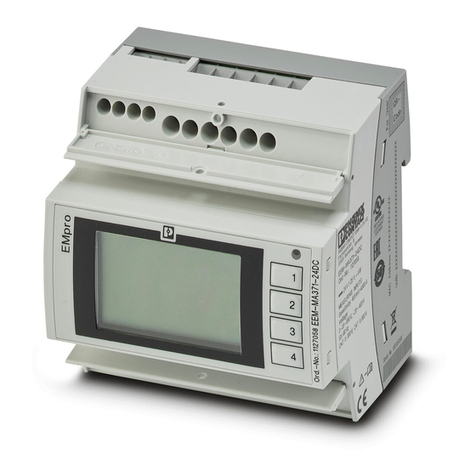
Phoenix Contact
Phoenix Contact EMpro EEM-MA371 Installation notes for electricians
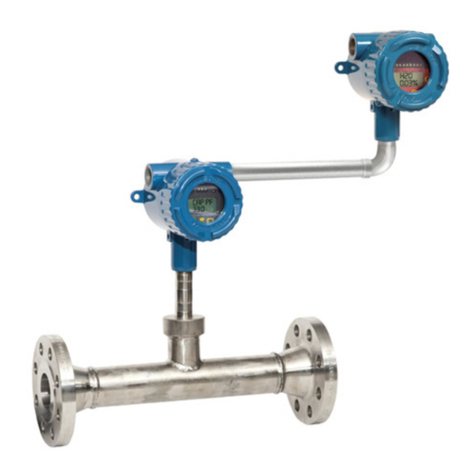
Ametek
Ametek Drexelbrook Universal IV CM Installation and operating instructions
